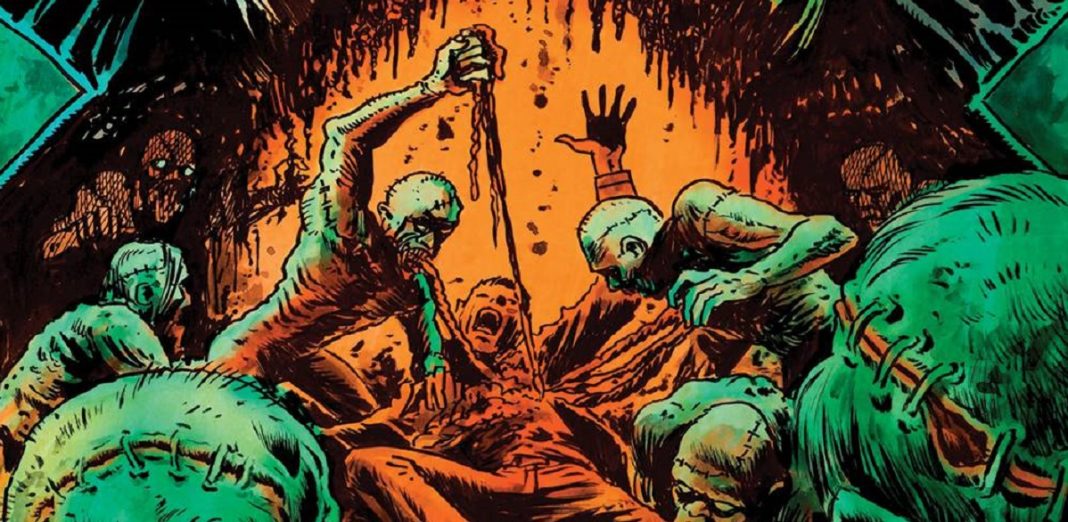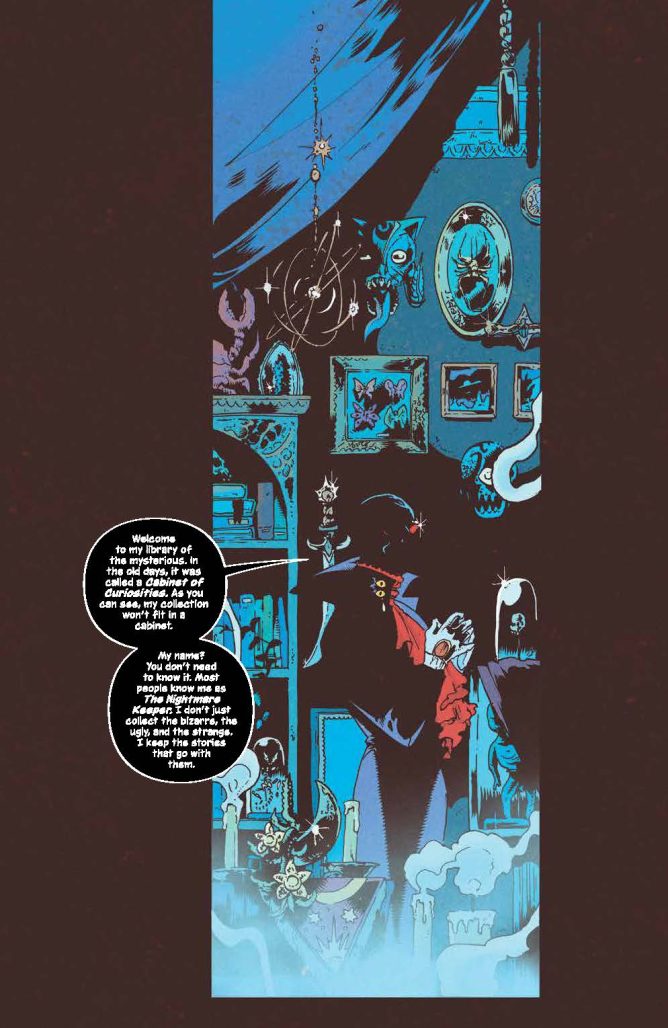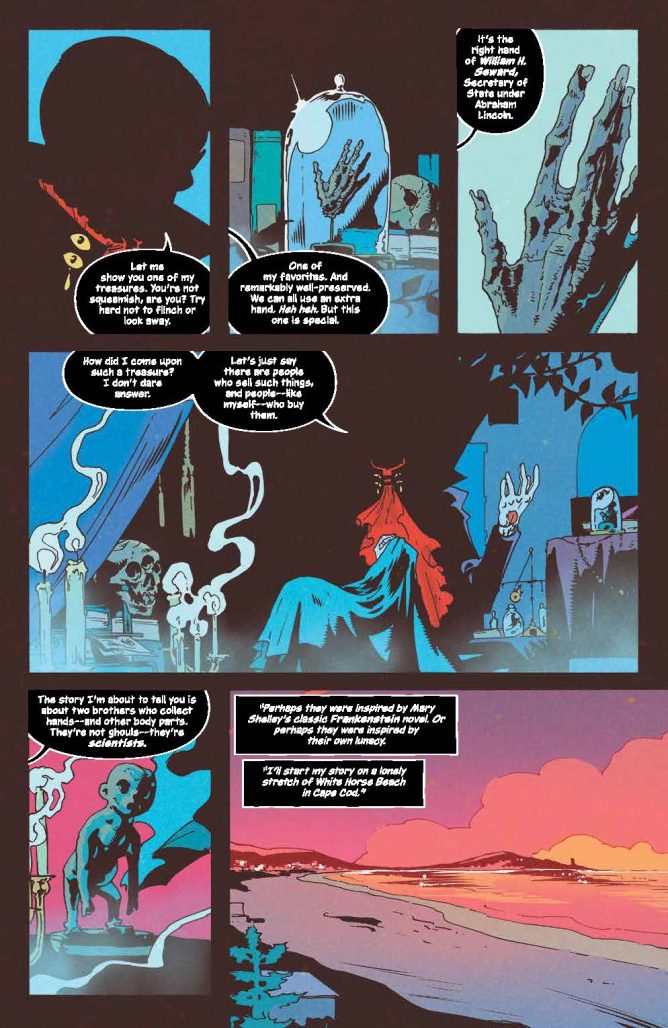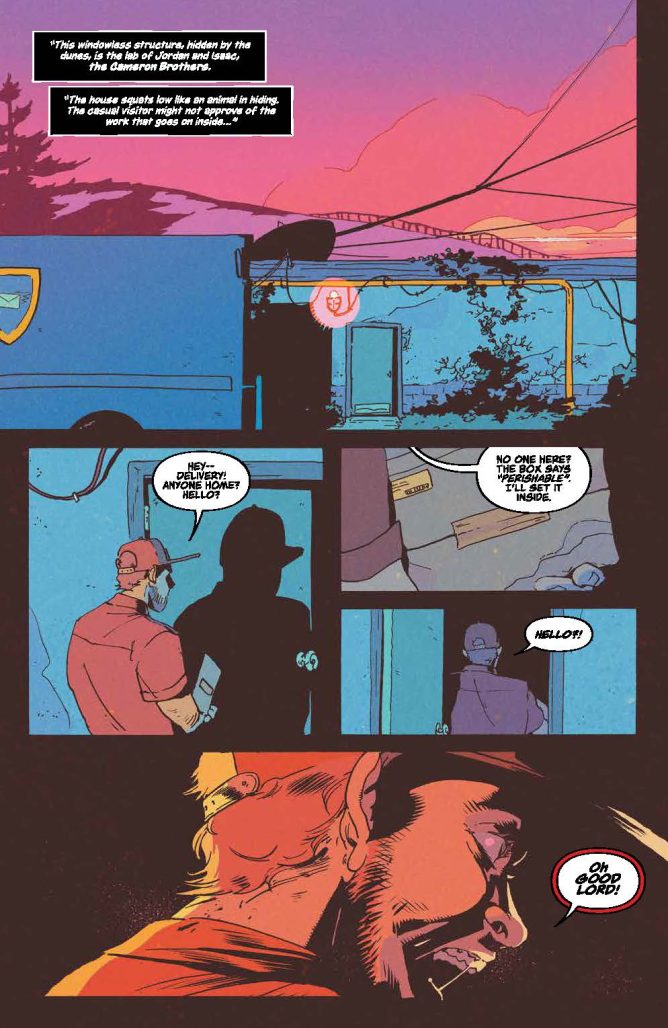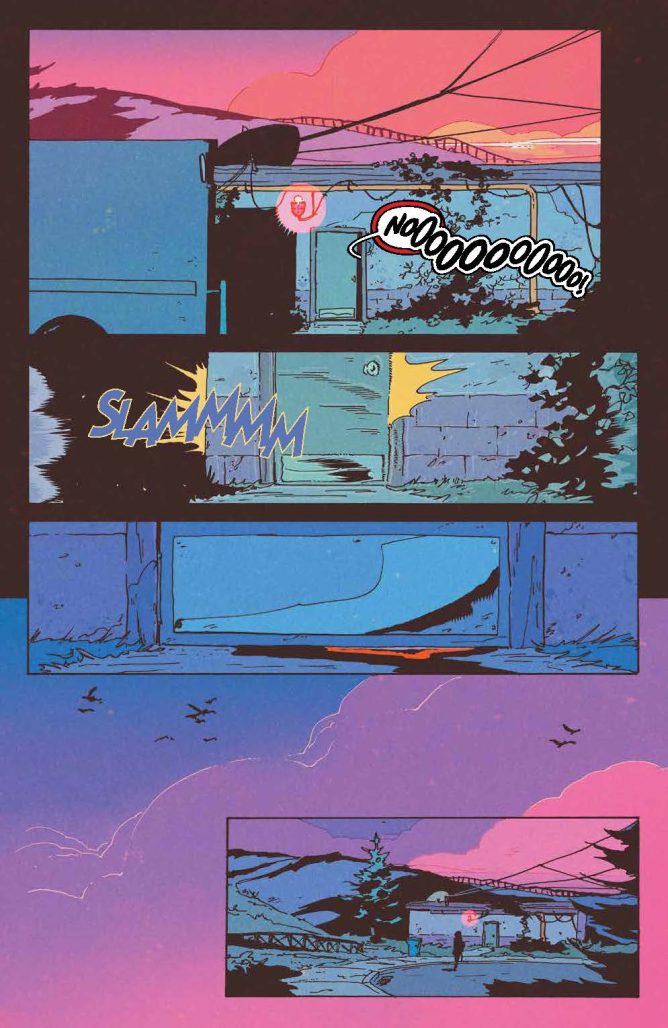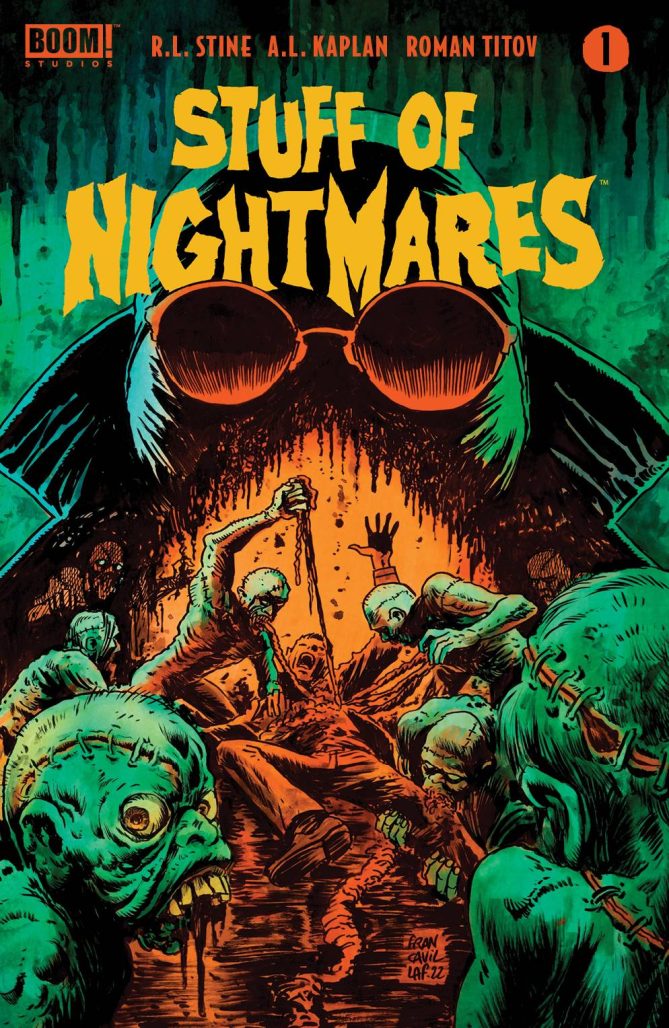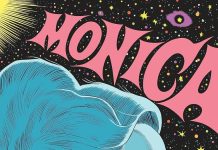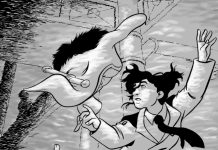This year marks the 30th anniversary of the first Goosebumps book. Add to this the Fear Street books, BOOM! Studios’ Just Beyond OGNs (and their Disney+ adaptation), and a number of other projects, and R.L. Stine qualifies as a generational guide for the horror genre. His young readers have grown up inspired to Monster Kid devotion, and to pursuing their own similar creative endeavors, just as earlier generations were influenced by Famous Monsters of Filmland magazine.
But Stuff of Nightmares #1 from BOOM! Studios, the first of a 4-issue limited series, is designed for an adult audience. Or, in Stine’s own words from the company’s promotion, “AT LAST I’m free to let my most horrific fantasies out! Hey, kids– stay away from STUFF OF NIGHTMARES, it’s my first horror comic book work for grownups. Ghastly, gory, and I hope, good stomach-churning fun!”.
As his entryway into horror comics for an adult audience, Stine has chosen reimagining iconic monsters in a modern setting. Blurbs regarding the first issue and its story, “The Monster Makers: Part 1”, are coy regarding exactly which classic horror story is being reworked, but the covers give a good indication as does the preview line about mad researchers ‘creating life’. The tale folds in bits of another classic horror story, however, one which has also been adapted to film more than once.
We meet the Keeper of Nightmares, our obligatory horror host, at the beginning and learn of his ‘collection’, consisting of items as well as stories. It works the series’ title into a clever wordplay which feels very much in the best Stine tradition.
Then we’re swept into a tale of young couple Shara and Diego, enjoying a twilight picnic on a lonely stretch of beach at Cape Cod. It’s the same beach where a delivery driver recently disappeared in an incident about which Shara, reporter for a small weekly newspaper, has been unable to acquire details. When they hear baleful wailing from a nearby facility, it leads to a chance encounter with brothers Jordan and Isaac Cameron, their associate Stella, and a miraculous scientific breakthrough. Or, as the more staid and squeamish might call it, unethical experimentation. Also murder.
The mood of the book is sufficiently eerie, and the swapping of Gothic castles in haunted woodlands for a windowless facility along a remote beachfront property makes for an effectively updated setting. The horrific elements strike hard, fast, and grisly, validating the ‘not for kids’ warning, thanks in large part to artist A.L. Kaplan’s stylistically creepy images. Experiments of the Brothers Cameron indeed constitute the stuff of nightmares in Kaplan’s hands and as supported by Roman Titov’s visually unsettling color schemes. Jim Campbell on letters layers on sound effect fonts worthy of b-movie chiller titling. Overall, the story stands on its own as an update, but it navigates on wobbly, zombie-like legs.
The narrative works against difficulties, mainly those of transplanting classic horror stories into modern times and accounting for the difference in technology. Parts of the solution here work, while others leave unsatisfying plot holes. Cell phones can be the bane of a writer’s existence. They smash traditional tropes, especially when it comes to horror stories where isolation and inability to contact another living soul often build feelings of dread and abandonment. It’s why excuses like ‘out of coverage area’ and ‘dead zones’ are eye-rollingly overused. But the best writers embrace the tech head-on and the most effective horror ones actually channel that tech so that it contributes to the foreboding.
Stine embraces the tech in one part of the story and creates tension with it. In other parts, he ignores it, and questions remain dangling for ‘reasons’. It may be the sort of gaps younger readers would gloss over, though that’s not a certainty. But for grownups, these issues may be troublesome.
A ‘missing delivery driver with no details available’ to a member of the press, even in the rustic setting of our story, raises narrative red flags for me. In the age of order-in everything, we see how service drivers communicate when they’ve completed a drop off. Texts and emails go out to customers, undoubtedly to the service HQ as well, and photos often accompany the contact, showing a customer precisely where a package has been left on their doorstep. How does a delivery driver disappear with no police follow up? Hide the delivery vehicle, and you may still have LoJacks to contend with. There will be records at fleet or service HQ with a list of addresses for the items carried and an e-roster of completed deliveries. The local constabulary may be as small as it seems in its brief introduction, but the delivery service and the driver’s family would surely be pressing for answers utilizing the tracking devices available.
The acquisition of raw materials for the research being conducted by the inadvisable science practitioners is another element surely harder to conceal in modern times than in previous centuries. Government supported studies aside, it truly weighs heavily against the suspension bridge of disbelief that the research duo and their associate could suppress talk about their work in a rural locale such as the story depicts. Especially given the sheer amount of materials they’ve apparently acquired.
It may simply be Stine’s attempt at a nostalgic bit of creepy fun for those adults he gatewayed into horror fans when they were kids. Spookily updating classic monsters in a manner similar to the children’s fare that came before, and gently adulting his approach. Which from a purely business standpoint isn’t foolish. Many readers will fit into that demographic.
But is it a satisfying horror comic for those not seeking nostalgia as much as just launching their Halloween season with a great scary read?
Because it’s a classic monster story modernized, it will seem familiar despite variations. But those variations may not sufficiently constitute a fresh take for some readers, while being too divergent to qualify as homage with others. If you’re a fan of Stine’s YA work, Stuff of Nightmares #1 is likely a safe bet for your spooky season reading pleasure. If you’re not, or if your tastes in horror are now far distant from those gateway years, the premiere issue may not be your cuppa witches’ brew.
Verdict: BROWSE
REVIEW: Stuff of Nightmares #1
Stuff of Nightmares #1
Writer: R.L. Stine
Artist: A.L. Kaplan
Colorist: Roman Titov
Letterers: Jim Campbell
Publisher: BOOM! Studios
Price: $4.99
“R.L Stine is back-but not for the faint of heart-with a chilling take on an iconic character, perfect for fans of Fear Street and EC Comics horror titles!
In the first of Stine’s reanimated reimaginings, you’re familiar with the classic tale of a mad scientist hell-bent on creating life, but what these two demented brothers have created is something else entirely!
Horror lovers won’t want to miss the legendary author’s return to comics in his first creator-owned single issue series, with art by A.L. Kaplan (Maw, Jim Henson’s The Storyteller).
Fans also won’t want to miss celebrating this milestone event with a Björn Barends variant signed by R.L. Stine and not one but two extra spooky glow in the dark covers by Francesco Francavilla and original Goosebumps cover artist Tim Jacobus!”
Read more great reviews from The Beat!


